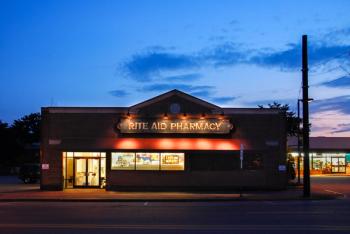
FDA Grants Priority Review to Update Label for Sotatercept-csrk
Key Takeaways
- Sotatercept-csrk is under priority review for label update based on the ZENITH trial, showing efficacy in PAH treatment.
- The ZENITH trial demonstrated a significant reduction in morbidity and mortality for PAH patients using sotatercept.
Results from the ZENITH trial show sotatercept's promise for pulmonary arterial hypertension treatment.
The FDA accepted and granted priority review for a new supplemental biologics license application (sBLA) seeking approval to update the US product label for sotatercept-csrk (Winrevair; Merck). The potential updated label is based on the phase 3 ZENITH clinical trial (NCT04896008), according to the manufacturer.1,2
Approved by the FDA in 2024, sotatercept is an activin signaling inhibitor therapy indicated for the treatment of adults with pulmonary arterial hypertension (PAH, Group 1 PH) to increase their exercise capacity, improve WHO* functional class (FC), and reduce the risk of worsening clinical events. It is administered via subcutaneous injection in 45- or 60-mg doses to improve the proproliferative and antiproliferative signaling and modulate vascular proliferation. Currently, sotatercept has a Prescription Drug User Fee Act (PDUFA) date of October 25, 2025.1,3
The sBLA is based on data from the randomized, double-blind, placebo-controlled phase 3 ZENITH trial that assessed the effects of add-on sotatercept in patients with advanced PAH. A total of 172 patients were randomly assigned to receive either sotatercept (starting dose of 0.3 mg/kg, with a target dose of 0.7 mg/kg) or placebo plus background PAH therapy every 21 days (n = 86 in each group).1,3,4
The ZENITH trial was the first PAH phase 3 outcome study to use a primary end point comprised entirely of major morbidity and mortality events, according to the manufacturer. Notably, the phase 3 HYPERION clinical trial (NCT04811092) evaluating sotatercept in adult patients with recently diagnosed PAH, WHO* Group 1 FC II or III at an intermediate or high risk of disease progression, was discontinued early because of positive results from the ZENITH trial’s interim analysis and a review of the totality of data from the sotatercept clinical program.1,5
The trial was stopped early on the basis of the efficacy results of a prespecified interim analysis. Among high-risk adults with PAH who were receiving the maximum tolerated dose of background therapy, treatment with sotatercept had resulted in a lower risk of a composite of death from any cause, lung transplantation, or hospitalization (at least 24 hours) for worsening PAH compared with placebo. At least 1 primary end point event occurred in approximately 17.4% of patients (n = 15) in the sotatercept group and in 54.7% (n = 47) of those in the placebo group (HR, 0.24; 95% CI, 0.13-0.43; P < .001).4
Death from any cause occurred in about 8.1% (n = 7) and 15.1% (n = 13) of patients in the sotatercept group and placebo group, respectively. Additionally, lung transplantation and hospitalization because of worsening PAH were more common in patients receiving placebo (transplantation: 7.0%, n = 6; hospitalization: 50.0%, n = 43) than in those receiving sotatercept (transplantation: 1.2%, n = 1; hospitalization: 9.3%, n = 8). The most common adverse events with sotatercept were epistaxis and telangiectasia, wrote the investigators.4
“We are pleased that the FDA has accepted our sBLA for [sotatercept] and granted a priority review to consider an update to labeling for [sotatercept] to include the impressive results of ZENITH. There remains a significant unmet medical need for patients living with PAH who, despite being on background therapy, remain at higher risk of morbidity and mortality,” Joerg Koglin, MD, senior vice president, global clinical development, Merck Research Laboratories, said in the news release. “The FDA’s priority review designation acceptance of our sBLA reinforces our confidence in [sotatercept] for a broad range of patients and represents a critical step toward advancing the treatment of PAH.”1
REFERENCES
1. Merck. FDA Grants Priority Review for WINREVAIR™ (sotatercept-csrk) to Update Label Based on Results From ZENITH Trial. News release. July 2, 2025. Accessed July 21, 2025. https://www.merck.com/news/fda-grants-priority-review-for-winrevair-sotatercept-csrk-to-update-label-based-on-results-from-zenith-trial/
2. A Study of Sotatercept in Participants With PAH WHO FC III or FC IV at High Risk of Mortality (MK-7962-006/ZENITH) (ZENITH). ClinicalTrials.gov. Updated May 13, 2025. Accessed July 21, 2025. https://clinicaltrials.gov/study/NCT04896008
3. Gallagher A. FDA Approves Sotatercept-csrk for Pulmonary Arterial Hypertension. Pharmacy Times. March 27, 2024. Accessed July 21, 2025. https://www.pharmacytimes.com/view/fda-approves-sotatercept-csrk-for-pulmonary-arterial-hypertension
4. Humbert M, McLaughlin VV, Badesch DB, et al. Sotatercept in Patients with Pulmonary Arterial Hypertension at High Risk for Death. N Engl J Med. 2025;392(20):1987-2000. doi:10.1056/NEJMoa2415160
5. McGovern G. Phase 3 HYPERION Trial Evaluating Sotatercept-Csrk Ends Prematurely, Moving to Final Analysis. Pharmacy Times. February 11, 2025. Accessed July 21, 2025. https://www.pharmacytimes.com/view/phase-3-hyperion-trial-evaluating-sotatercept-csrk-ends-prematurely-moving-to-final-analysis
Newsletter
Stay informed on drug updates, treatment guidelines, and pharmacy practice trends—subscribe to Pharmacy Times for weekly clinical insights.




















































































































































































































